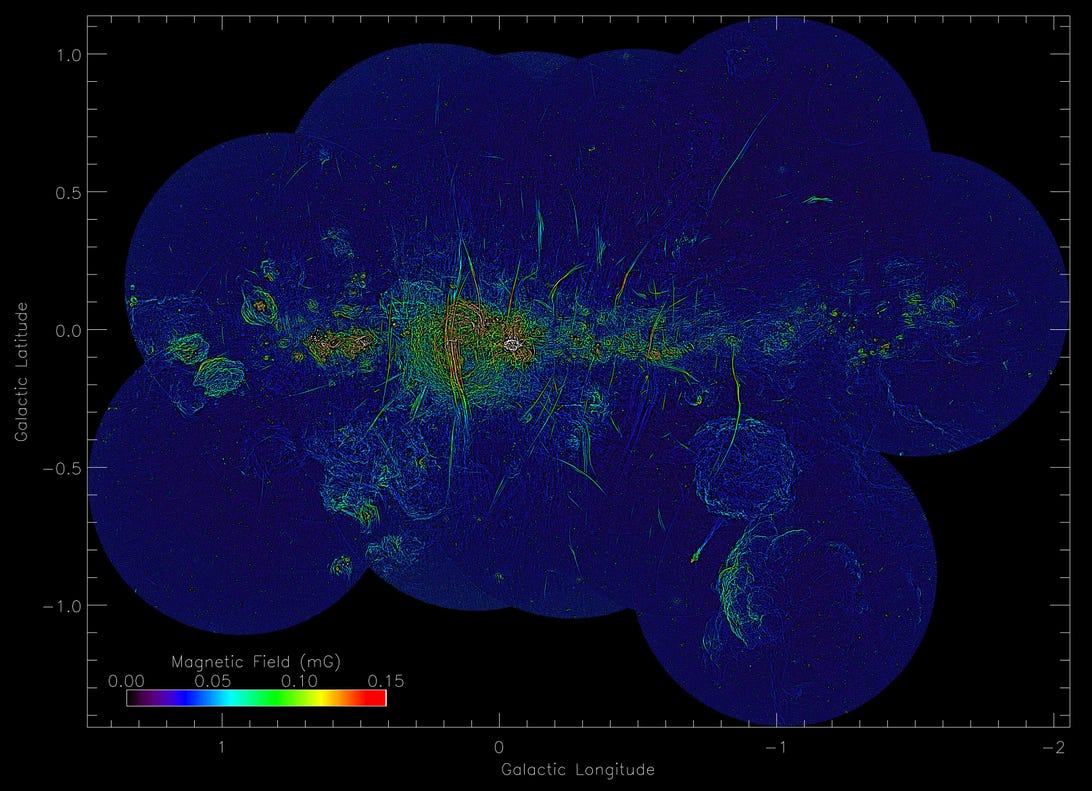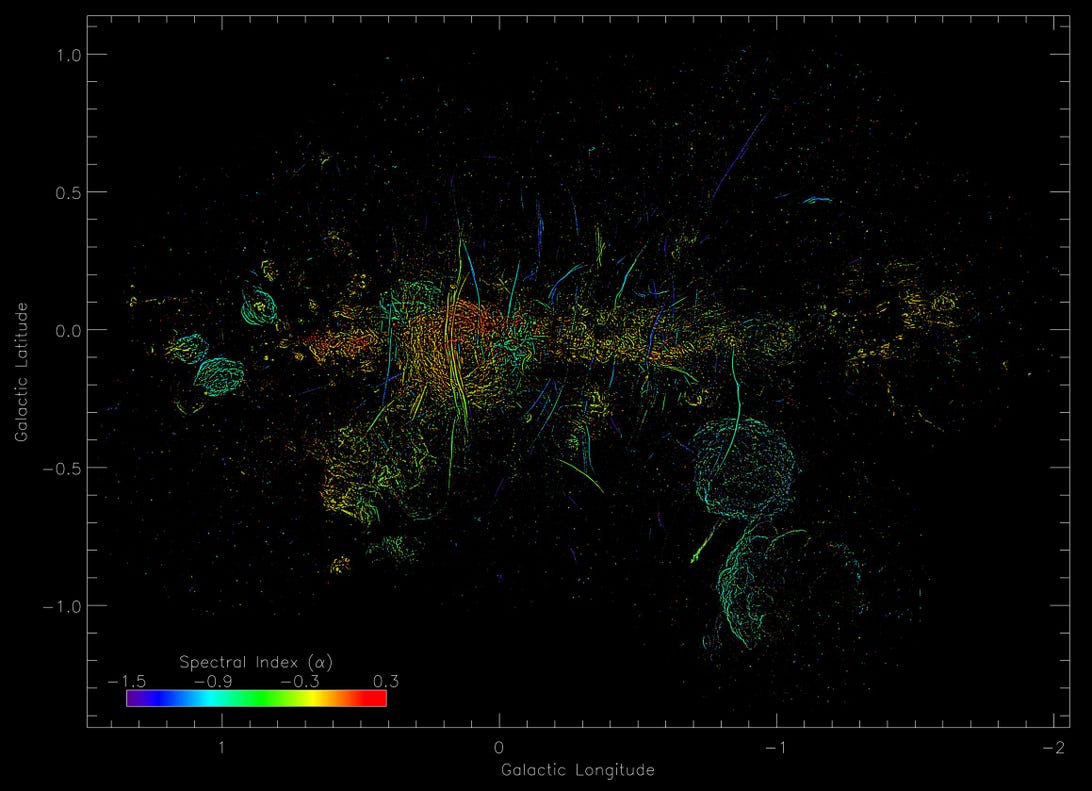
An image showing the distribution of the strengths of magnetic fields.
Northwestern University/Saoro/Oxford UniversityIn the early 1980s, scientists imaged the center of our galaxy 25,000 light-years from Earth. To their surprise, they stumbled upon a cluster of “strands” 150 light-years long hanging out in an oddly organized pattern. For years, they scrutinized the stringy forces, trying to understand what they are and why they’re there.
No, these galactic noodles (probably) aren’t the work of aliens. But they later revealed themselves to be some sort of magnetic wiring, catching space-borne cosmic ray electrons and forcing the particles to gyrate around their fields at nearly the speed of light. If anything, the enigma escalated.
Fast-forward to today. The same researcher who led the first imaging endeavor decided to create an updated version. In a paper published online Wednesday and accepted to The Astrophysical Journal Letters, he presents his results: an absolutely spectacular panorama of radio emission data stemming from the Milky Way’s center.
Cosmic phenomena such as star bursts, stellar nurseries and supernova graveyards stained the picture with brilliant streaks, but most strikingly, the image unveiled 10 times more perplexing strands than before. “It’s like modern art,” Farhad Yusef-Zadeh, an astrophysicist at Northwestern University and lead author of the paper, said in a statement. “These images are so beautiful and rich, and the mystery of it all makes it even more interesting.”


An image showing the spectral index for the filaments.
Northwestern University/Saoro/Oxford UniversityHe calls the newer picture a “watershed in furthering our understanding of these structures,” because the initial, relatively sparser collection of filaments was too small to draw any real conclusions about their origin and purpose.
Photographing a massive galaxy
It took three years of surveying the sky and 200 hours using the Meerkat telescope at the South African Radio Astronomy Observatory for Yusef-Zadeh’s team to generate precise observations of 20 separate sections.


A mosaic image (with labels) of the center of the Milky Way, captured with radiowaves. This is before the background was removed. In this picture, the magnetic filaments are large, vertical slashes throughout.
Northwestern University/Saoro/Oxford UniversityThen, the researchers pieced the cutouts together and isolated the magnetic filaments by removing the background. That led to the mesmerizing mosaic photograph that resembles a Jackson Pollock.
“I’ve spent a lot of time looking at this image in the process of working on it, and I never get tired of it,” Ian Heywood, an astrophysicist at Oxford University and study co-author, said in a statement. “When I show this image to people who might be new to radio astronomy, or otherwise unfamiliar with it, I always try to emphasize that radio imaging hasn’t always been this way, and what a leap forward Meerkat really is in terms of its capabilities.”
Leads on the filaments
Now blessed with an ocean of inexplicable Milky Way filaments to analyze, Yusef-Zadeh and team are carrying out a sort of population analysis to understand what the cosmic spaghetti strands have in common, and where they differ.
“If you were from another planet, for example, and you encountered one very tall person on Earth, you might assume all people are tall. But if you do statistics across a population of people, you can find the average height,” he said. “That’s exactly what we’re doing. We can find the strength of magnetic fields, their lengths, their orientations and the spectrum of radiation.”
So far, the team concludes the strands’ magnetic fields are amplified as you travel across them and exhibit variation in their radio emissions. Due to the latter, they say the pieces could’ve originated from a black hole that once lurked in the center of our galaxy or a giant radio-emitting bubble, like one discovered in 2019.
Still, huge question marks remain, such as why are these filaments so structured? And why are there so many? Perhaps the biggest confusion lies within the fact that particles on the strands’ field are moving at nearly the speed of light. Any faster, and they’d fit a time-travel requirement.
“How do you accelerate electrons at close to the speed of light?” Yusef-Zadeh wonders. “One idea is there are some sources at the end of these filaments that are accelerating these particles.”
Going forward, the team says they’ll continue searching for answers.
“We’re certainly one step closer to a fuller understanding,” Yusef-Zadeh said. “But science is a series of progress on different levels. We’re hoping to get to the bottom of it, but more observations and theoretical analyses are needed. A full understanding of complex objects takes time.”

